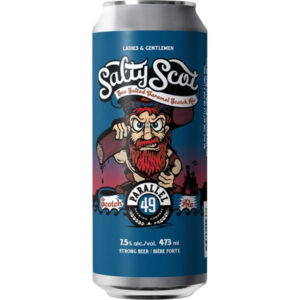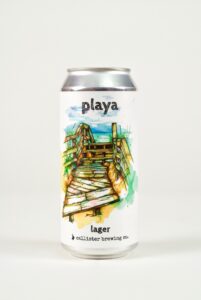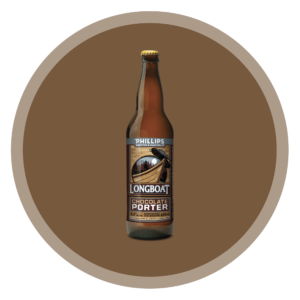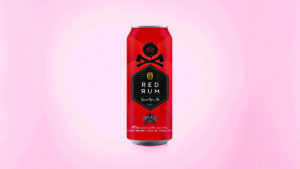So, if you’re like me and you love beer, but you know basically nothing about it, then congratulations, you’re completely ordinary! Now, I’ve decided that I want to review some of what I drank over the holidays, and learn about beer. How is it made? What is the difference between a stout and a porter? A lager and a pilsner? What are malts and hops? What was beer like in medieval times? If these burning questions keep you up at night, join me on an adventure of brewing discovery, and I’ll do my best to make this palatable. Feel free to crack a beer while you read.
Okay, here’s my token history paragraph: nobody really knows exactly when beer as we know it was first brewed, mainly because the art of brewing developed gradually over many centuries. The first alcoholic drink is generally agreed to be mead, then wine, then beer, and spirits. It seems likely that the first society to brew beer was the Sumerians, around 600 years ago.
So what is beer, and how does it differ from other alcoholic drinks? Although all alcohol is produced by fermentation of sugars to create ethanol, the difference between them is the fermentation base, and the process. Mead uses honey, wine and cider use fruit such as grapes or apples, and rum uses sugar cane or molasses. Beer uses grains, as do many spirits such as whiskey, gin, and vodka, to name only a few, but while spirits use a distillation process, beer does not.
Fun Fact: Spirits like whiskey start as beer! The same brewing process is used, but spirits need an extra step. During distillation, the beer is heated up and the alcohol evaporates first to separate it from the water, then it’s cooled and condensed back into liquid to create concentrated alcohol.
Beer is brewed by boiling barley grains to create sugars, which yeast feed upon to create alcohol and carbon dioxide. The flavours in beer are created by hops and malts. A malt is actually just a different name for the grain after it has been processed in a way to bring out their flavour and nutrients.
After the raw grain is processed into malt, it’s crushed and soaked in warm water to form a porridge-like mixture called the mash, and it’s here that brewers may add other grains like rice or wheat to change the overall flavour profile. After the enzymes in the malt convert the starches into sugars, the mash is strained. This extracted, sweet, grain-flavoured liquid is called the wort, and it’s what will become beer.
After this process is complete, the wort is boiled in a large kettle, and hops—a flower of which there are many varieties—are added. Generally, the main contribution of hops to a beer’s flavour is bitterness from alpha acids, while the essential oils in hops create other flavours and aromas. Dry hopping and wet hopping refer to the freshness of the hops, and the two methods create very different flavours.
Fun Fact: If beer didn’t contain hops, it would be a different type of alcoholic drink called a gruit, that uses other flavouring herbs like bog myrtle, yarrow, heather, or juniper.
Descriptions of a beer’s flavour can be misleading. In general, water, yeast, barley, and hops are the basic ingredients that are used to make beer, and when a beer is described as having, for example, chocolate, coffee, and caramel notes, it’s possible that none of these substances exist within the beer at all. Rather, it is the roasted malts that create flavours we consider similar. Likewise, descriptors such as citrus and pine are likely created by the different types of hops, rather than additives to the beer itself. However, many craft breweries do defy this standard by adding other creative ingredients.
After the hops have boiled, the strained mixture is transported to a fermenter, where yeast is added, which convert the sugar into alcohol and carbon dioxide. Yeast has wider impacts, too. The choice of yeast determines whether a beer is an ale or a lager base, which are the two basic classifications of all beers. After fermenting for up to two weeks, the beer is finally ready for bottling and consuming by you, the satisfied and tipsy customer.
Now, I think that all this learning has made me rather thirsty, so it’s time to head to the fridge for a little tipple!
I started off the evening with an old faithful: Guinness Draught Stout (4.2%), which has been brewed in Ireland for the last 265 years! This is a classic, dark Irish stout, with a characteristic black appearance, and a thick, frothy head. It’s actually one of relatively few nitrogen beers, which, in addition to their natural carbonation, also add nitrogen in about a 70/30 ratio, which gives a beer a very smooth, creamy texture, rather than the bright soda pop feeling of CO2.
But hold on a sec, what even is a stout anyway? How are they different from porters? Let’s look into this a bit.
The darkness of a beer is determined by how long the malts are roasted, whether they use dry malt powder or liquid malt syrup, and the temperature it’s brewed at. Also, if ale yeast is used for a dark beer, the result is a porter or a stout with a heavier flavour, and if lager yeast is used, the result is an intense black lager with a crisper flavour.
So what’s the difference between a stout and a porter? Well, as it turns out, brewers can roast the barley while skipping the malting process, predictably called unmalted barley. This creates a porter, which is lighter in body, often lower in alcohol content and less intense in flavour than a stout, which uses traditionally malted barley. (For the astute reader, I’ll concede that Guinness Stout actually uses both malted and unmalted barley, which should give a sense of how intangible the difference between porters and stouts actually is.)
Fun Fact: In the early 1700s, common beer was a dark brown ale that was produced quickly without requiring barrel aging, and generally consumed by the working men of London around the time of the Industrial Revolution. These blue-collar workers called porters hauled cargo all day for little pay, and after work were thirsty for a cheap strong beer “down the pub.” This became known as porter beer. Later brewing processes created a stronger, stouter version of beer which was naturally called stout porter, which eventually was just shortened to stout.
Now, let’s try a few more!
When I mention Nutty Uncle Peanut Butter Stout (6.1%) by Dead Frog Brewery, you instantly form an idea in your mind of what that must taste like, and I’m here to tell you that you’re absolutely right. If, like me, you love peanut butter flavoured anything, then it’s a delicious seasonal beer you should scramble to obtain before it disappears. If the idea of mixing peanut butter and beer makes you gag, I apologize: I’m probably a little nuts.
The Salted Chocolate Porter (6%) from Steamworks Brewing tastes far stronger than it is. Dark and bitter at first sip, it has a sweet aftertaste. This is a chocolate beer that contains no chocolate, but does contain vanilla bean and Vancouver Island sea salt. This is good for relaxing with an after-dinner movie.
Philips’ Longboat Chocolate Porter (5%) is less intense, and while it has no vanilla, it does contain cocoa powder. This Victorian classic is an affordable staple and represents everything that a dependable porter should be.
Moving from porters to ales, it seems that slightly under-ripe raspberries are a ubiquitous and popular adjunct for brewers, as they tend to lend a distinctly berry characteristic without tasting sweet or fruity. Longwood Brewing’s Berried Alive Raspberry Ale (5%) is a fairly run-of-the-mill raspberry ale, with a berry flavour that is very subtle, which may work against it. If it were a more distinct flavour, perhaps it would impress me. As it is, the humdrum light ale base is far too much on display to be at all inspiring.
Although brewed alcohol has been around for thousands of years, ales are the oldest beer in history. While lagers were invented in Bavaria around 1600, ales have been traced to medieval England, around 1200. You may have heard about how everybody in medieval times must have been drunk off their arses all of the time since pretty much all they drank was beer, but this isn’t entirely true. The ale of that era is called small beer. It was unfiltered, thick in consistency (basically liquid bread), and the alcohol content was so low (about 1% ABV), you could drink it all day long without getting intoxicated.
Brewing this cheap, weak beer had a number of practical benefits. Highly nutritious, it was a source of bonus calories to a population of people entrenched in poverty. Water was often filthy, and since boiling beer kills bacteria (which weren’t even discovered until 1675), small beer was far healthier than water. Since alcohol acts as a preservative, it allowed huge quantities of beer to be stored for a long time. All told, it provided hydration and nutrition to medieval peasants for next to no cost. Ale is also fermented and served at room temperature, ideal for a population without refrigeration.
Because of the versatility of ale, it forms the majority of beer variations. Here are just a few.
Dead Frog Brewing’s Redrum Spiced Red Ale (5%) showcases light caramel malts, spiced with orange peel, cardamom, allspice, black pepper, and toasted white oak. Aged in rum barrels, it has a unique flavour profile, but despite all of this I found it thin and less memorable than its description led me to believe.
The Smoked Belgian Abbey (5%) by Howl Brewing is apparently “a Belgian style amber ale with a subtle smoked flavour and fruity tartness.” Don’t be fooled by this. It tastes more like some old hospital equipment was thrown in the smoker for a good long while before being boiled out. Each sip was made hoping for some sort of acclimatization, and each sip was met with a painful grimace. This would be a great beer to give your ex-spouse for your ex-anniversary.
 Wheat beers, or witbiers, also originate in Belgium, and combine wheat with barley to create a sweet, mellow base flavour. It’s customary to leave them unfiltered, which results in a cloudy beer with yeast still visible inside. Wheat beers aren’t for everyone, but here’s a life hack: If you find yourself with a wheat beer that’s unpalatable, add some lime juice to it to totally change the flavour profile. (This also works to tone down excessive hops, like in IPAs.)
Wheat beers, or witbiers, also originate in Belgium, and combine wheat with barley to create a sweet, mellow base flavour. It’s customary to leave them unfiltered, which results in a cloudy beer with yeast still visible inside. Wheat beers aren’t for everyone, but here’s a life hack: If you find yourself with a wheat beer that’s unpalatable, add some lime juice to it to totally change the flavour profile. (This also works to tone down excessive hops, like in IPAs.)
From Hoegaarden Brewing, their flagship, self-titled wheat beer Hoegaarden White Ale (4.9%) is legendary. Spiced with orange and coriander, with an unmistakable wheat flavour and citrusy hops, this is a beer I first tasted around 20 years ago, and I remember thinking that it tastes like actual flowers.
Next up is Parallel 49 Brewing’s Salty Scot Sea Salted Caramel Scotch Ale (7.5%). For a Scotch Ale, I expected this to kick me in the teeth, which it didn’t quite do. It has the flavour of a strong beer without the punch, which ultimately makes it dark but kind of thin, and it has almost no lingering flavour. Consequently, the experience fades almost immediately after the swallow, so curb your expectations with this one.
Now, let’s move onto lagers.
Lagers are usually crisp, light-coloured beer with a low alcohol content and mild flavour (Lagerhaus is actually a German word meaning “warehouse”) and they’re fermented and stored at a cold temperature.
What’s the difference between a lager and a pilsner? Well, a pilsner is actually a type of lager, named after the Czech city Plzeň, or Pilsen. In 1842, Bavarian brewer Josef Groll wanted to improve upon the poor-quality Czech lagers of the time, and eventually produced a crisp, bright golden beer that’s still around today: Pilsner Urquell.
Fun Fact: Before I knew any of that, I bought a can of Pilsner Urquell simply because it said on the label, “The Original Pilsner… brewed the original way.” I decided right then and there that such astoundingly original, eloquent writing absolutely demanded my patronage. I did not know at the time that urquell means “original source” in German. Go figure.
At 4.4%, Pilsner Urquell is light in flavour and appearance. The sharp bitter flavour that quickly fades into a mildly herbal fragrance perfectly demonstrates the practical difference between lagers and pilsners. The term “hop-forward” doesn’t so much mean that the beer itself is very hoppy, just the first sip. This is different from lagers, which generally possess more of a malty flavour.
So what about rice beer? Well-known brands of rice beer including Asahi and Sapporo might give the idea that rice beer is a Japanese invention, or that it contains only rice. This is not actually true. A rice lager is a style of beer that uses rice in addition to barley to create a light, dry-flavoured beer, and in fact, Budweiser, America’s most popular beer for over 20 years, is a rice beer.
 Playa rice lager (5%) by Callister Brewing Company is everything you’ve come to expect from a rice beer. With a far grainier flavour than a fully barley beer, and about as hoppy as a pilsner, a defining characteristic of rice beers is their dryness. Other than that, they’re crisp and effervescent, but lack any particularly adventurous flavour.
Playa rice lager (5%) by Callister Brewing Company is everything you’ve come to expect from a rice beer. With a far grainier flavour than a fully barley beer, and about as hoppy as a pilsner, a defining characteristic of rice beers is their dryness. Other than that, they’re crisp and effervescent, but lack any particularly adventurous flavour.
There are indeed some alcoholic beverages that are made using rice without barley. Sake is a Japanese wine using only rice, and huangjiu is a Chinese wine using rice and millet. Speaking of wine, what is barley wine? Well, it’s actually just a beer brewed to be very strong, about 8% to 12%. In order to get such high alcohol content, brewers use far more malts than a usual beer, because malts are sweet, and more sugar means more alcohol. In order to counteract this sweetness, a whack-load of hops are added, and the end result is a strong, intense concoction that if considered the evening’s best friend may be the morning’s worst enemy.
Although I don’t have a barley wine handy to review, I do have the Wine Barrel Aged Dark Saison With Malbec Pomace (5.7%) by Wild Ambition Brewing. A saison (meaning “season” in French) is considered a “farmhouse ale,” and is generally described as a dry, fruity ale, but this is not a particularly strict definition. This drink, as one might expect from a wine barrel aged beer, doesn’t really taste like beer—it tastes more like a wine diluted with a light beer. You can really taste those wine barrels, but it’s also thin and sour and really not what I would consider enjoyable.
Over the holiday season I learned more than I ever anticipated about beer, and I tried various concoctions: some that I’ll never forget, and others that I hope never to remember. Thanks for joining me on this adventure of brewing discovery. May your malts be rich and your hops bright. Cheers!


